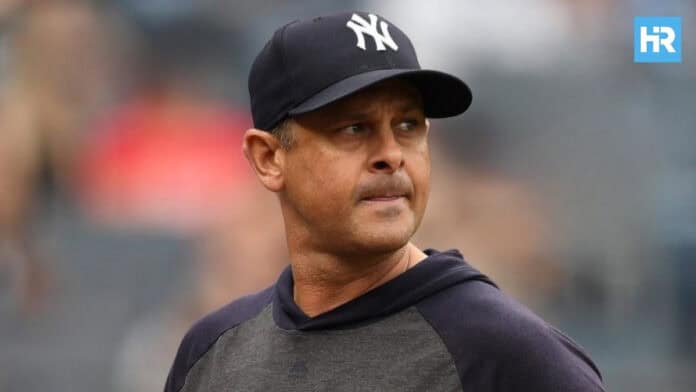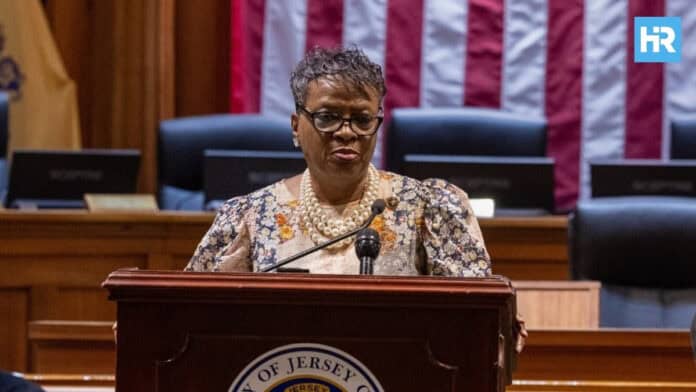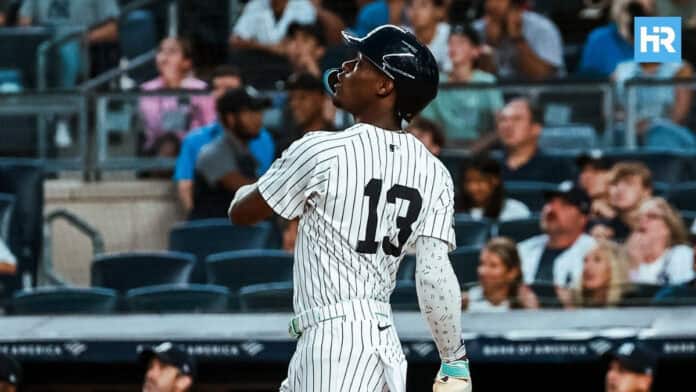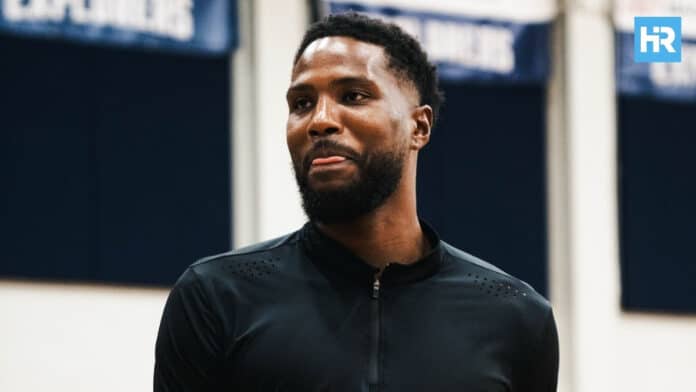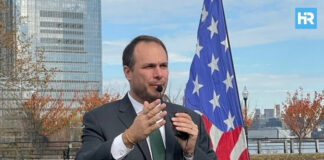The best online casinos in Virginia are a lot like the state itself – welcoming and surprisingly full of fun once you get to know them.
They don’t need bells, whistles, or smoke and mirrors to stand out. Instead, they focus on what really matters: smooth gameplay, generous bonuses, and a trustworthy experience.
Best Virginia Online Casinos
Heads up about our links! Adblock might get confused so please disable it if you have any issues.
The best VA online gambling sites offer high RTP games, top-notch bonuses, and a host of other amazing features. Let’s take a closer look at the top sites.
Are Online Casinos Legal in Virginia?
As of June 2025, online casino gaming is not yet regulated in Virginia. While the state has legalized land-based casinos and online sports betting, efforts to authorize online casinos have not been successful to date.
In early 2025, legislative proposals to legalize online casinos were introduced but ultimately tabled for further study. Lawmakers have indicated that the issue may be revisited in the 2026 legislative session.
Currently, Virginians can legally participate in online sports betting, daily fantasy sports, and pari-mutuel horse racing. Additionally, social and sweepstakes casinos are available, offering casino-style games with opportunities to win prizes.
In addition, there are various offshore casino sites accepting players from Virginia, including our top picks.
Virginia Online Gambling At a Glance
| Legal Betting Age: |
21+ |
| Popular Games: |
Slots, blackjack, roulette |
| Tax: |
18% tax on gambling |
| Licensing: |
Regulated by the Virginia Lottery Board (for sports betting and land-based casinos) |
| Deposit Methods: |
Credit/debit cards, e-wallets, bank transfers |
Best Online Casinos Virginia – Reviews
1. Ignition – Best Online Casino in Virginia Overall

Pros:
- $3,000 welcome bonus
- 300+ online casino games
- High-traffic poker rooms
- Weekly tournaments
- Progressive jackpots on live tables
- Must-drop hourly & daily rewards
Cons:
- No e-wallets
- Doesn’t offer online sports betting
Entering Ignition feels like stepping into an exclusive VIP lounge – except you don’t need a membership to enjoy it. Everything is designed to make your stay worthwhile, from massive bonuses to nonstop tournament fun.
Online Casino Games: 5/5
The best VA casino site offers something for every type of player – from trending slots like Triple 7s and new releases like Book of Thor to hold-and-win hits like Great Buffalo.
Table game lovers can enjoy strategy classics like Blackjack and Caribbean Hold’Em, casual picks like Roulette, and unique options like Roll the Dice and Craps.
The real highlight is the poker section, with Sit & Gos, Mystery Knockouts, anonymous tables, quick seats, and customizable setups. With over 10,000 players daily and $2M in weekly guarantees, it’s one of the busiest poker rooms around.
Bonuses and Promotions: 4.8/5
New players at Ignition who deposit with crypto can claim a 150% match bonus up to $3,000, split evenly between the casino and poker sections. Prefer fiat? You’ll still get a solid 100% match bonus up to $2,000, also divided between poker and casino play.
The best Virginia online casino site also offers crypto reload bonuses of up to 50% to $1,000 every Monday. Hot drop jackpots, progressive blackjack tables, and daily scratch cards are available for ongoing rewards.
Deposit and Withdrawal Methods: 4.9/5
Bitcoin Cash, Ethereum, and Litecoin are the top options at the best online casino in Virginia. Withdrawals for Litecoin and Tether take under an hour, and Bitcoin can take up to 24 hours.
Prefer fiat? You can use MatchPay, checks by courier, player transfers, or instant-withdrawal vouchers. Bank transfers take a few business days.
>> Claim your $3,000 casino and poker bonus [Ignition] <<
2. Super Slots – Top Online Gambling Virginia Bonuses

Pros:
- 300 free spins welcome bonus
- Rewarding VIP program
- Over 1,100 online slots
- High-RTP video poker variants
- High withdrawal limits
- 20+ payment methods
Cons:
- Needs better filters for slots
- High withdrawal minimum for bank transfers
One thing’s certain – Super Slots delivers unmatched variety across games, bonuses, and payment options. New players get a generous head start with a great welcome package while returning players enjoy regular reloads, free spins, and VIP rewards.
Online Casino Games: 4.7/5
This Virginia online gambling site offers over 1,300 games, from slots and table games to one of the largest live dealer sections available to VA players.
Slot fans can enjoy hundreds of options – popular picks like Piggy Bonanza, exclusives like Sushi Fortune Hold and Win, and early releases like Anubis Fortune. The Bonus Eligible Games section includes 350+ slots, making it easy and fun to clear bonuses.
Table games include blackjack, baccarat, roulette, and craps, while the live dealer section has 70+ tables.
Bonuses and Promotions: 4.7/5
This Virginia online casino site offers a 300 free spins welcome bonus to all newcomers who make their first qualifying payment. You’ll get 30 spins a day for the first 10 days.
Ongoing promos include VIP rewards, free spins, and regular freeroll and cash tournaments with leaderboard prizes. With so many generous offers, it’s no surprise that it’s also one of the top online casinos in Maryland.
Deposit and Withdrawal Methods: 4.7/5
Super Slots offers a wide range of payment options, including Visa, Mastercard, P2P, Money Orders, and 15+ cryptocurrencies.
Deposits are instant, starting at $10 and going up to $1 million for crypto or $2,500 for cards. Withdrawals range from $20 to $10,000 for crypto and $500 to $25,000 for bank transfers.
3. Slots of Vegas – Best Virginia Casino Online for Slot Games

Pros:
- 300+ mobile-optimized slots
- $2,500 signup bonus + 50 free spins
- Weekly free spins & bonus offers
- Instant play available
- Up to 35% monthly cashback
- Higher table and withdrawal limits for VIPs
Cons:
- No phone support available
- Higher wagering on blackjack
Slots of Vegas lives up to its name, delivering nonstop slot action in a setting that captures the classic Las Vegas vibe. From the game selection to the overall design, everything feels authentically Vegas.
Online Casino Games: 4.8/5
The casino library at Slots of Vegas is powered by RealTime Gaming (RTG), a provider known for high-quality slots, creative themes, and rewarding bonus features.
Virginia players can enjoy various themes and features, from old-school 3-reel machines to video slots with multipliers, expanding wilds, and jackpots. Some of the hottest picks in this section include Rudolph’s Revenge and Fortunate Buddha, featuring five-figure jackpots.
Beyond slots, you’ll find table games like blackjack, baccarat, and roulette at this Virginia online gambling site. The variety isn’t as extensive as at Ignition, but all the essentials are here – plus a few unique finds like Akbar Romeo Walter and 32 Cards.
Bonuses and Promotions: 4.8/5
When you sign up at Slots of Vegas, you can choose from two offers. You can claim a 250% bonus up to $2,500 on slots and keno, with low 10x wagering requirements. To get you started, this VA online casino will also give you 50 free spins.
Those who prefer table games can claim a 190% welcome bonus up to $1,900. This offer applies to all games, not only slots. The wagering requirement is 5x, except for blackjack and video poker, where it’s 30x.
Fun Fact: Slots of Vegas is the best online casino in Texas.
Deposit and Withdrawal Methods: 4.7/5
Banking is easy at this VA online casino gambling site. You can deposit using Visa, Mastercard, American Express, Discover, and Changelly, as well as a few popular cryptocurrencies. Virginia players can choose from Bitcoin, bank transfers, Coindraw, or check transfers for withdrawals.
>> Grab your $2,500 bonus and 50 free spins [Slots of Vegas] <<
4. Raging Bull Slots – Best VIP Program for Online Gambling in Virginia

Pros:
- 250% bonus up to $2,500 + 50 spins
- Daily free spins & weekly specials
- 200+ games from top studios
- Fully optimized for mobile play
- Personalized VIP perks & gifts
- 24/7 live chat and phone support
Cons:
- Fewer table games than competitors
- Limited access before registration
Regular players who want to unlock bigger perks over time will love Raging Bull Slots. The casino’s VIP program is invite-only, and once you’re in, you’ll get personal account managers, priority payouts, and exclusive gifts (among other perks).
Online Casino Games: 4.6/5
This top site for online gambling in Virginia may not have the largest game library, but it delivers quality with a solid mix of slots, table games, and video poker – all powered by RealTime Gaming (RTG).
Slots take center stage, featuring 3-reel classics, wild multipliers, and big progressive jackpots. Popular picks include Achilles Deluxe, Cash Bandits 3, and Diamond Fiesta, known for five-figure payouts.
Table games like blackjack, roulette, and baccarat are available, though the variety is limited compared to Ignition or Super Slots.
Bonuses and Promotions: 4.8/5
Raging Bull Slots offers one of Virginia’s top welcome bonuses: a 250% match up to $2,500 plus 50 free spins on Mighty Drums. The 10x wagering requirement is lower than average.
Regular players get daily free spins, weekly/monthly insurance, free chips, and up to 15% cashback through the rewards club.
VIPs enjoy a personal host, priority payouts, higher limits, and custom gifts – but entry is invite-only, usually based on frequent or high deposits. It also makes Raging Bull Slots one of the best New York online casinos out there.
Deposit and Withdrawal Methods: 4.6/5
This online VA casino site supports a good mix of payment options, including Visa, Mastercard, Bitcoin, and bank transfers. Deposits start at $30 and are usually processed within 2-3 minutes.
Withdrawals can take longer than at other sites, with bank transfers requiring 7-10 business days, which is longer than the industry standard. If you want same-day payouts, you can use Coindraw, and if you’re a VIP, you’ll skip the wait with priority payouts anyway.
5. BetWhale – Best Virginia Live Online Casino

Pros:
- Over 75 live dealer games
- Flexible betting limits ($0.50-$20,000)
- 250% welcome bonus
- 1,500+ online casino games
- Full sportsbook + live betting
- Verification in less than 1 minute
Cons:
- No dedicated promotions page
- Slower customer support during peak hours
BetWhale is known as a top sportsbook in Virginia but also hosts one of the best live casinos. With smooth streaming and tables for both casual and high-stakes players, it delivers a great experience.
Online Casino Games: 4.8/5
In the live casino, there’s a table for just about anyone. Table limits start at $0.50 for roulette and up to $12,500 for those who like to bet big. Blackjack tables range from $10 to $20,000 per hand, offering flexibility you won’t find just anywhere.
If you’re a baccarat or Super 6 fan, you’ll find tables ranging from $1-$100 for casual players and up to $250-$10,000 for high rollers.
This Virginia online gambling site also stands out for its variety of live casino games. You’ll find Classic and Early Payout Blackjack, American, European, Auto Roulette, Instant Lucky 7, Tri Card Poker, 6+ Poker, Dice Duel, and more.
Prefer betting on sports? Then you’ll be happy to know that BetWhale is one of the best betting sites out there, covering dozens of sports.
Bonuses and Promotions: 4.6/5
This online casino in Virginia welcomes new players with a 250% deposit match bonus with a 30x wagering requirement. You can qualify with a minimum deposit of $20, which is lower than most rivals require.
The bonus is eligible for slots, card games, and table games, which is a big plus, as many sites exclude table games from wagering.
Fun Fact: BetWhale is also one of the best sports betting sites in Texas.
Deposit and Withdrawal Methods: 4.5/5
At BetWhale, you can deposit using Visa, Mastercard, American Express, Discover, PayPal, Neosurf, Flexepin, and 10 cryptocurrencies, including Bitcoin.
Deposits start as low as $10 and go up to $9,000 with PayPal, while crypto deposits are unlimited.
Players can cash out for withdrawals using Visa, Mastercard, bank wires, Bitcoin, or Tether. The most you can withdraw per transaction is $2,500, and you’ll usually receive your winnings within 3 days.
Virginia online casinos VS. social casinos
| Online Casinos |
Social Casinos |
| Let you wager real money on popular games like slots, blackjack, roulette, and poker |
Use play coins or sweepstakes entries, no real money betting involved |
| Offer cash payouts, crypto withdrawals, and generous welcome bonuses |
May give out gift cards or sweepstakes prizes, but usually no direct cash value |
| Geared toward players who want serious gameplay, strategy, and bigger wins |
Built for casual fun, daily rewards, and sharing moments with friends |
| Host high-stakes tournaments, progressive jackpots, and live dealer games |
Focused on quick matches, low-pressure games, and leaderboard-style challenges |
Best Virginia Online Gambling Sites – Our Ranking Criteria
Quality and Quantity of Casino Games
A top-tier game library is a must, but it doesn’t mean much if the selection is limited. We focused on Virginia casinos offering hundreds, if not thousands, of games from reputable software providers.
The best Virginia gambling sites feature a mix of slots, table games, live dealer tables, and video poker – with high-RTP options, progressive jackpots, and exclusive titles earning extra points.
Welcome Bonuses & Ongoing Promotions
With Virginia’s growing online casino scene, bonuses are a big deal. We ranked sites based on welcome bonuses, reload promos, free spins, and cashback offers –but fair bonus terms matter just as much as big numbers.
Virginia casinos with low wagering requirements, long bonus validity, and multiple game eligibility performed best during our testing.
Fast Deposits & Withdrawals
Nothing kills a vibe more than a slow payout. The best VA gambling sites offer instant deposits, low withdrawal limits, and fast crypto cashouts (within 24 hours).
We also checked for low (preferably no) banking fees and flexible limits, ensuring both casual players and high rollers can move money easily.
Top-Notch Live Casino Experience
Many Virginia players now prefer real-time gambling action from the comfort of their homes, so we gave extra points to casinos with high-quality streaming, professional dealers, and flexible betting limits.
Virginia casinos with multiple blackjack, roulette, and baccarat tables – plus unique games like Lightning Dice and Super 6 – scored higher.
Strong Security & Player Trust
We only ranked licensed and secure Virginia online gambling sites with SSL encryption, a solid track record of fair play, and reliable payouts.
We also checked for transparent terms, responsible gambling tools, and responsive customer support, making sure each Virginia online gambling site met industry standards for player protection.
Sports Betting Options
While the lack of sports betting wasn’t a deal-breaker, it adds to the overall gambling experience. Many VA online casino players also enjoy betting on NFL, NBA, and college sports, so we gave extra credit to casinos offering top-tier sportsbooks.
We used similar criteria to rank the best Florida online casinos.
What Makes Ignition the Best VA Online Casino?
All of the Virginia casinos on our list have something unique to offer. So why did we rank Ignition as the #1 pick? Well, there’s more than one reason behind this:
Must-Drop Jackpots Every Day & Hour
Unlike other VA casinos, Ignition’s Hot Drop Jackpots guarantee hourly and daily payouts. Games like A Night With Cleo and 777 Deluxe offer better jackpot odds than standard progressives at Raging Bull or Slots of Vegas.
Poker Rooms With $2 Million in Weekly Guarantees
The best online casino in VA has some of the highest-traffic poker rooms on the market, with over 10,000 active players daily and more than $2 million in weekly tournament guarantees.
Competitors like Super Slots and BetWhale have decent online poker sections but can’t compete with Ignition’s traffic, cash game variety, and exclusive Mystery Knockout events.
$3,000 Crypto Welcome Bonus with Low Wagering
Most Virginia casino bonuses come with high rollover requirements and strict game restrictions. Conversely, Ignition offers up to $3,000 for crypto deposits, split between casino games and poker – with a player-friendly 25x wagering requirement, much lower than the industry average.
Fastest Payouts in Virginia – Under 1 Hour
Unlike many online casinos in Virginia, Ignition processes crypto payouts in under an hour, making it the fastest withdrawal option.
If you’re in a hurry, gambling with Bitcoin, Litecoin, and Ethereum are your best choices for near-instant cashouts at Virginia casinos online. In comparison, most other casinos take 24-48 hours, giving Ignition a clear edge.
Why Should I Use the Best Virginia Online Casino Sites?
Most players think online casinos are just about convenience, but it’s also about getting more value. Here’s why online is the better option:
- You Can Save Money: When gambling at land-based casinos, you’re not just spending money on bets – you’re also paying for gas, hotels, parking, food, and tips for dealers and staff. Even if you win big, those extra costs eat into your profits. Virginia online casinos cut those expenses, letting you keep more winnings.
- No More Waiting for a Seat: If you’ve ever been to a busy casino, you know the frustration of circling the room, looking for a blackjack or poker table with an open seat. That’s not the case when gambling online in Virginia.
- Test Games for Free Before Betting Real Money: Brick-and-mortar casinos don’t let you “try out” a slot machine or a blackjack table before wagering. Online casinos in Virginia let you play casino games for free in demo mode, so you can learn the rules, test strategies, and find games you enjoy before risking your own money.
- Lower Min Bets & Higher Max Wins: Many land-based casinos (especially high-end resorts) set high minimums for table games. Online casinos let you play blackjack, online roulette, and poker for as little as $1 per hand while offering massive max bet limits for high rollers, sometimes exceeding $20,000 per round.
Best Casino Games to Play in Virginia
While Virginia has only recently stepped into the world of online gambling, players in the state can already enjoy an impressive range of online casino games. Whether you’re a fan of strategy, chance, or high-energy action, there’s something for everyone.
Here are the top casino games you’ll find at the best online casinos in Virginia:
Online Slots
Slots are by far the most popular choice, thanks to their wide variety of themes, bonus features, and potential for big jackpots. From classic three-reel games to modern video slots packed with special effects and free spins, Virginia players will find hundreds of options to explore.
Blackjack
A timeless card game where skill and strategy matter, blackjack is ideal for players who want to beat the dealer by hitting a hand as close to 21 as possible. Many Virginia online casinos offer several blackjack variations, including single-deck, multi-hand, and live dealer tables.
Roulette
This iconic wheel game offers simple rules and exciting payouts. Virginia players can choose between American, European, and French online roulette versions, each offering different odds and strategies.
Poker
Online poker rooms and casino poker games like Texas Hold’em, Caribbean Stud, and Three Card Poker are popular among VA online casino players who enjoy reading opponents and making strategic bets.
Live Dealer Games
For a more immersive experience, live dealer games bring real-time action to your screen. Virginia players can interact with professional dealers in blackjack, roulette, baccarat, and poker games, all streamed live from a casino studio.
Video Poker
Blending the excitement of slots with the strategy of poker, video poker machines like Jacks or Better and Deuces Wild are a favorite for players looking for a lower house edge and skill-based gameplay.
Online Casino Bonuses in Virginia
Bonuses are one of the main draws for signing up at Virginia online casinos. They give new players a head start and reward regulars with extra chances to play. Below are some of the most common types of bonuses you’ll see when gambling online in Virginia.
Welcome Bonuses
These are offered to new players when they first join a site. A welcome bonus often matches your initial deposit (e.g., 100% up to a set amount), giving you extra bankroll to explore casino games.
No Deposit Bonuses
No deposit bonuses let you claim free credits or spins without adding money to your account. They’re smaller than deposit bonuses but great for testing a platform risk-free.
Free Spins
Free spin offers usually apply to slots and can come as part of a welcome package or as a standalone promotion. They give you a set number of spins without using your own funds, letting you chase real cash wins.
Reload Bonuses
Reloads are designed for returning players who deposit again after the welcome offer. They typically come as a percentage match and are often tied to weekly or monthly promotions.
Responsible Gambling in Virginia
While online casino gaming can be exciting, it’s important to keep it fun and under control. The best Virginia online casinos offer tools and resources to help you gamble responsibly, including deposit limits, cooling-off periods, and self-exclusion options.
If you or someone you know is struggling with gambling, free help is available. You can contact the Virginia Council on Problem Gambling (VCPG) at 1‑888‑532‑3500 for confidential support and resources.
Virginia Online Casinos – FAQs
Is Online Casino Gaming Available in Virginia?
Yes, online casino gaming is available in Virginia. VA players can join many online casinos, like the ones on our list, to play real money games, claim online casino bonuses, and cash out winnings.
Can You Play Real Money Online Casino Games in Virginia?
Yes, you can. While online casinos are not regulated by Virginia state law, international online casinos legally accept players from VA. This means you can deposit, play, and withdraw real money winnings safely at reputable sites.
Are Virginia Casino Sites Safe?
Yes, online casinos in Virginia are safe when playing at reputable sites. The best casinos are licensed, use SSL encryption, and offer fair gaming to protect your personal and financial information.
What’s the Best Online Casino in Virginia?
Ignition is the best online casino in Virginia, offering a great mix of casino games and poker. New players can claim a $3,000 crypto welcome bonus and enjoy instant withdrawals.
Who Regulates Casinos and Gambling in Virginia?
The Virginia Lottery Board oversees gambling in the state, including lotteries, land-based casinos, and charitable gaming. They also enforce regulations and issue licenses for new casino projects.
When Will Online Casinos Be Legal in Virginia?
Online casinos are not yet regulated in Virginia. Lawmakers recently tabled legalization efforts for further study, but new bills are expected to be reviewed in the 2026 legislative session. Until then, players can legally access out-of-state online casinos.
Top 5 VA Online Gambling Sites – Quick Comparison
Here’s a quick recap of our top five Virginia real money online casinos, highlighting their standout features and best bonus offers.
Ignition: With high-traffic poker rooms and over 300 casino games, Ignition is Virginia’s best all-around gambling site. New players can claim a 300% crypto bonus up to $3,000 or a 200% match up to $2,000 with fiat.
Super Slots: The top choice for VA online casino bonus hunters, offering one of the most generous welcome packages around. Players can claim up to 300 free spins in welcome bonuses, plus ongoing reloads, free spins, and VIP rewards.
Slots of Vegas: Known for its huge selection of RTG-powered slots, including high-RTP and jackpot games. New users at this Virginia casino online can start with a 250% welcome bonus of up to $2,500 plus 50 free spins.
Raging Bull Slots: Best for VIP players, featuring an invite-only loyalty program with personal account managers, priority payouts, and exclusive gifts. New users can grab a 250% bonus up to $2,500 plus 50 free spins on Mighty Drums.
BetWhale: The best live casino in Virginia, with 75+ live dealer tables and flexible betting limits ranging from $0.50 to $20,000 per round. New players get a 250% deposit match bonus with a 30x wagering requirement.
How to Sign Up at an Online Casino in Virginia?
Getting started at a VA online casino is quick and easy. Below, we’ll guide you through the process step by step using our #1 pick, Ignition, as an example:
Step 1: Visit the Casino Website
- Go to the official Ignition Casino site
- Click the orange “Join” button
- Enter your personal information
- Click “Register” to proceed
Step 2: Verify Your Account
- Check your inbox for an email from Ignition
- Click the verification link inside to activate your account
Step 3: Make Your First Deposit
- Log in and go to the Deposit section
- Choose one of the available payment methods
- Enter your deposit amount and claim your welcome bonus
- Have fun playing at online casinos in VA!
Tips for Gambling at the VA Online Casinos
Before we leave you to the games, here are three final tips to set expectations straight:
The House Always Has an Edge
No matter how lucky you feel, every casino game is designed to favor the house – that’s how casinos make money. Some games, like blackjack or video poker, give you a better chance of winning than others, but across all players over time, the casino always comes out ahead. You can win, but it’s important to play smart.
Set Limits Before You Start Playing
One of the easiest ways to avoid a gambling problem is to set a budget before you start. Decide how much you will spend and stick to it – win or lose. Many online casinos let you set deposit limits to help keep things in check.
Know When Gambling Stops Being Fun
If you’re feeling overwhelmed, trying to win back losses, or spending beyond your means, it may be time to step away. Gambling problems don’t develop overnight, but they are very real. If you ever feel like things are slipping out of your control, support is available through resources like Gamblers Anonymous and self-exclusion programs.
So, What Are the Best Online Casinos in VA?
If you’re looking for the best online gambling experience in Virginia, our top pick is Ignition. It stands out from competitors with exclusive Hot Drop Jackpots, high-traffic poker rooms, and fast crypto payouts.
Whether you’re after huge bonuses, live dealer action, or top-tier slots, the casinos on our list have something for every player.
Ready to test your luck? Sign up today, claim your welcome bonus, and start playing responsibly!
Important information for our readers:
Participation is restricted to adults 21+.
Gambling carries financial risk and may lead to addiction.
Never gamble with money you can’t afford to lose.
Check your local laws to confirm online gambling is allowed where you live.
If you need help, call 1‑800‑GAMBLER for free, confidential support any time.
More details: https://www.ncpgambling.org/


